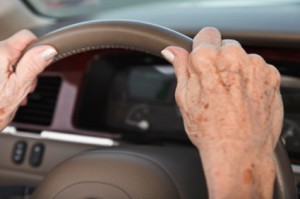
istockphoto
In the first study, older drivers (over 70) were compared with younger experienced drivers (25 to 55) who were both navigating an actual vehicle through a simulated world projected on displays outside the vehicle. Drivers approached three different intersections and had to turn. In one, a hill across the main street intersection obscured a possibly approaching car. In the others—turning from a side street onto a main street or vice-versa—trees and curves blocked views of other oncoming cars. The older drivers scanned the danger zone (the region from which a plausible threat could emerge) less often and for significantly shorter times both while approaching and completing the turn —compromising safety.
Another study tested the effects of a training program. Older drivers, randomly divided into three groups, were videotaped while driving their cars from home to a destination of their choice. That’s all one group did. Another, “passive training” group got a 30 to 40 minute lecture about the hazards of intersections and the proper way to scan while turning. The third group watched a video replay of their driving and received feedback (most identified their mistakes before they were pointed out). They then practiced proper scanning and turning on a driving simulator and listened to the same lecture. In a post-test, there was no difference between the first two groups. The third, however, drove as well as younger experienced drivers. Twelve months later, the effects of training had not worn off.
The researchers believe that older drivers, fearful of hitting something ahead of them, develop a habit of extreme caution in driving, but looking mostly straight ahead. This strategy fails at intersections, where collisions usually involve a car coming from the side. “We’re not claiming this is a cure-all for every problem,” says Pollatsek. But in this situation, with drivers of normal vision and cognitive abilities, “the training has a huge effect.”
Pollatsek, 71, is officially an older driver. But he hasn’t had an accident since he was 25. “Like most people,” he says, “I think I’m a great driver.”
Source:Association for Psychological Science.
